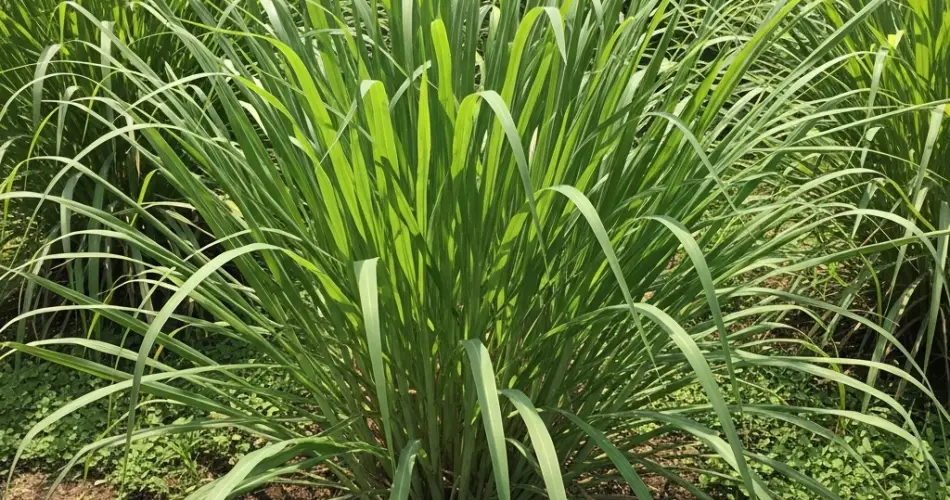Lemongrass is a fragrant, versatile herb popular in both culinary and ornamental gardens. Its strong citrus aroma not only adds flavor to dishes but also repels pests naturally, making it an excellent addition to an organic garden. When strategically paired with the right companion plants, lemongrass can enhance garden health, improve pest control, and even boost the productivity of nearby plants.
This article explores the best companion plants for lemongrass, how they benefit from being grown together, and what combinations to avoid for a well-balanced and thriving garden.
Why Companion Planting with Lemongrass Works
Companion planting is a time-tested gardening practice where certain plants are grown together for mutual benefits. Lemongrass makes a great companion plant because of its:
-
Pest-repelling properties – Its strong scent deters mosquitoes, whiteflies, and aphids.
-
Tall, clumping growth – It can act as a windbreak or provide light shade to smaller plants.
-
Low maintenance – Lemongrass doesn’t demand a lot from the soil, making it an easy neighbor.
These traits make lemongrass a valuable partner in any herb, vegetable, or flower garden.
Best Companion Plants for Lemongrass
Here are some of the most effective and beneficial plants to grow alongside lemongrass:
1. Basil
Basil and lemongrass both enjoy full sun and warm, well-drained soil. When grown together, basil benefits from the pest-deterring powers of lemongrass. Additionally, both herbs are frequently used in Southeast Asian cuisine, making them a great pair for culinary gardeners.
2. Tomatoes
Lemongrass can help protect tomatoes from common pests like aphids and whiteflies. Its presence also creates a more diverse microenvironment, which supports healthier plant growth. Since both plants enjoy similar sunlight and watering needs, they’re easy to grow side by side.
3. Peppers
Like tomatoes, peppers thrive in warm weather and well-draining soil. Lemongrass helps deter insects such as aphids and spider mites that commonly attack pepper plants. The two also make good use of vertical and horizontal space in garden beds.
4. Marigolds
Marigolds are well-known for their pest-repelling properties, and when combined with lemongrass, the effect is even stronger. Together, they form a powerful natural barrier against nematodes, aphids, and mosquitoes. Marigolds also add color and pollinator appeal to the garden.
5. Cilantro (Coriander)
Cilantro and lemongrass grow well together during the cooler seasons. Lemongrass offers a bit of protection from wind and harsh sun, extending cilantro’s growing season. Cilantro may also benefit from fewer pests when planted near lemongrass.
6. Mint
Mint and lemongrass both release strong aromas that deter pests like ants, aphids, and mosquitoes. However, because mint is highly invasive, it’s best to grow it in containers near lemongrass rather than directly in the ground.
7. Thyme
Thyme is a low-growing herb that pairs well with taller lemongrass, making efficient use of garden space. Both herbs thrive in similar growing conditions and complement each other in the kitchen.
8. Lavender
Lavender enjoys full sun and benefits from the pest-repellent nature of lemongrass. The combination of lavender’s floral fragrance and lemongrass’s citrusy scent creates a relaxing and aromatic garden space while keeping many insect pests at bay.
Plants to Avoid Near Lemongrass
While lemongrass has many companions, there are a few plants that don’t pair well with it:
-
Cool-weather crops like lettuce, spinach, and kale may struggle near lemongrass. Its preference for warm temperatures and full sun creates conditions too harsh for leafy greens, which prefer partial shade and cooler soil.
-
Beans and peas may not benefit from lemongrass as a neighbor. These legumes have different nutrient needs and may compete with lemongrass for space and soil nitrogen.
It’s best to keep lemongrass in the warmest, sunniest parts of your garden and grow these incompatible plants in cooler or shaded areas.
Tips for Growing Lemongrass Successfully
-
Sunlight: Lemongrass needs 6–8 hours of direct sunlight daily.
-
Soil: It prefers well-draining, fertile soil with regular watering.
-
Spacing: Plant lemongrass about 24 inches apart to allow room for its clumping habit.
-
Harvesting: Regular trimming encourages new growth. Use sharp scissors to cut the stalks near the base.
Lemongrass grows well in the ground or in containers, making it adaptable to gardens of all sizes.
Final Thoughts
Lemongrass is more than just a flavorful herb—it’s a hardworking companion plant that contributes to a healthy, vibrant garden. When paired with compatible herbs, vegetables, and flowers, it helps deter pests, promote growth, and create a more sustainable ecosystem. With proper care and smart planting, lemongrass can become a cornerstone of your organic garden, supporting both productivity and beauty throughout the growing season.
